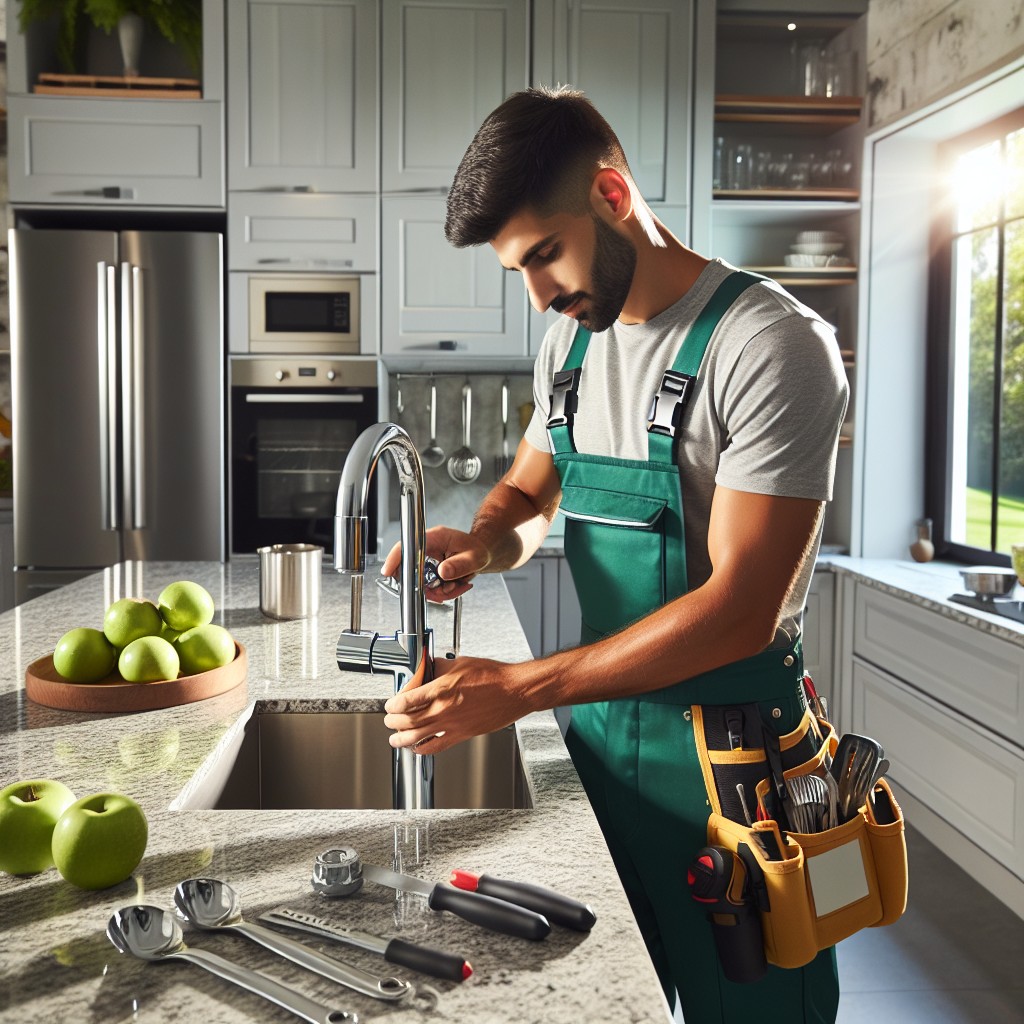Last updated on
In this article, you’ll learn about the key factors that determine the cost of faucet replacement, along with practical ways to manage these expenses.
Key takeaways:
- Using a cost calculator simplifies estimating faucet replacement expenses.
- Consider factors like faucet style, materials, location, and additional features.
- DIY can save money, but hiring a pro offers expertise and warranties.
- Local professionals provide tailored recommendations and ensure quality work.
- Check credentials, get written estimates, and read reviews before hiring.
What's Inside
Faucet Installation Cost Calculator

Navigating the maze of faucet replacement expenses is made simpler with an installation cost calculator. This tool provides a personalized estimate by considering factors such as the type of faucet, materials required, and regional labor rates. Here’s what you need to know about using one:
- Input Selection: Begin by selecting your faucet style. Whether it’s a basic, pull-down kitchen faucet or an elegant vessel sink faucet, the complexity of the fixture directly influences cost.
- Materials and Supplies: Next, add the necessary installation materials such as new supply lines, gaskets, and plumber’s putty. These seemingly minor components can affect the overall price.
- Geographical Location: Your location plays a role. Plumbers’ rates vary widely from city to city. The calculator adjusts for these regional differences.
- Additional Features: Account for extras such as water filtration systems or touchless technology. They enhance convenience but also affect the final estimate.
- Labor vs. DIY: If planning to hire a professional, the calculator takes the guesswork out of labor costs by approximating the hours needed for installation.
Remember, the calculator serves as a starting point for budget planning. It helps set realistic expectations before you dive into the world of faucet upgrades.
Kitchen and Bathroom Faucet Installation Costs
Factors affecting the cost of kitchen and bathroom faucet installation vary widely, but here are the key elements you should consider:
- Type of Faucet: Whether it’s a pull-down kitchen model or a sophisticated hands-free bathroom faucet, the complexity of the fixture often dictates the cost. Expect the price to rise with added features like water filtration or touchless operation.
- Materials and Finish: Chrome or stainless steel faucets are typically budget-friendly, while oil-rubbed bronze or brushed nickel may add to the cost.
- Plumbing Condition: Older homes might need an update to supply lines or valves, leading to increased labor time and materials.
- Location and Accessibility: Undermount sinks or those with tight cabinet spaces may require extra effort and time to navigate.
- Additional Features: Installation of extras like a soap dispenser, requires additional holes and work, thus increasing costs.
- Regional Labor Rates: Installation costs can fluctuate based on where you live. Metropolitan areas often have higher rates than rural locations.
Remember to consider the longevity and warranty of the faucet. Investing a bit more upfront for a quality faucet can save on future repair or replacement costs.
DIY Faucet Installation Vs. Hiring a Pro
When considering a faucet installation, the decision to DIY or hire a professional hinges on several factors. Assessing your skills is paramount; a successful DIY project typically requires basic plumbing knowledge, comfort following instructions, and aptitude with tools like wrenches and screwdrivers. Undertaking this task yourself can significantly reduce costs, sometimes to just the price of the faucet and a few supplies.
On the other side, hiring a pro offers the assurance of expertise and efficiency. Plumbers can troubleshoot unforeseen issues such as water damage or incompatible fittings, which might flummox the average homeowner. Furthermore, professional installation often comes with warranties on labor, providing peace of mind that any post-installation problems will be resolved without additional costs.
Yet, keep in mind, professionals charge not just for the faucet but for their time, which includes travel, preparation, and installation activities, potentially adding hundreds to the bill.
Time is another consideration; a pro can usually complete the job in a few hours, whereas DIY might extend to a full day or weekend, depending on the learning curve and unexpected challenges.
Balancing these aspects—cost versus time, skill level, and potential for mistakes—will inform the right choice tailored to your situation.
Hiring Local Professionals
Engaging a skilled local plumber can significantly streamline the process of replacing a faucet and ensure that it’s done right the first time. These experts come equipped with all the necessary tools and have the expertise to handle unexpected issues that might arise during installation, such as corroded pipes or incompatible fixtures.
Here are several benefits and considerations when choosing to work with a local professional:
- Tailored Recommendations: They can provide personalized advice on the most suitable faucet types for your home’s style and plumbing setup.
- Time Efficiency: Professionals can typically complete the job much faster than a DIY approach, saving you valuable time.
- Quality Assurance: Established plumbers often offer a warranty on their work, giving you peace of mind.
- Compliance: They are knowledgeable about local building codes and will ensure your new faucet meets all regulations.
Before hiring someone, remember to check their credentials, ask for a clear estimate in writing, and look at reviews or ask for references to gauge the quality of their work.




